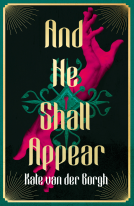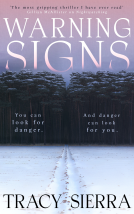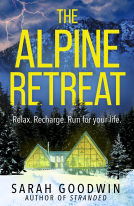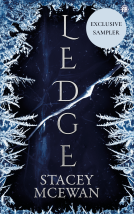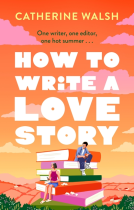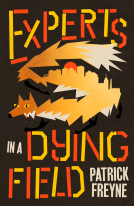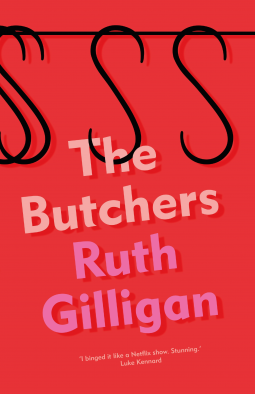
The Butchers
by Ruth Gilligan
This title was previously available on NetGalley and is now archived.
Send NetGalley books directly to your Kindle or Kindle app
1
To read on a Kindle or Kindle app, please add kindle@netgalley.com as an approved email address to receive files in your Amazon account. Click here for step-by-step instructions.
2
Also find your Kindle email address within your Amazon account, and enter it here.
Pub Date 26 Mar 2020 | Archive Date 28 Feb 2020
Talking about this book? Use #TheButchers #NetGalley. More hashtag tips!
Description
A photograph is hung on a gallery wall for the very first time since it was taken two decades before. It shows a slaughter house in rural Ireland, a painting of the Virgin Mary on the wall, a meat hook suspended from the ceiling - and, from its sharp point, the lifeless body of a man hanging by his feet.
The story of who he is and how he got there casts back into Irish folklore, of widows cursing the land and of the men who slaughter its cattle by hand. But modern Ireland is distrustful of ancient traditions, and as the BSE crisis in England presents get-rich opportunities in Ireland, few care about The Butchers, the eight men who roam the country, slaughtering the cows of those who still have faith in the old ways.
Few care, that is, except for Fionn, the husband of a dying woman who still believes; their son Davey, who has fallen in love with the youngest of the Butchers; Gra, the lonely wife of one of the eight; and her 12-year-old daughter, Una, a girl who will grow up to carry a knife like her father, and who will be the one finally to avenge the man in the photograph.
Advance Praise
'I binged it like a Netflix show... It's stunning' - Luke Kennard, author of The Transition
Available Editions
| EDITION | Hardcover |
| ISBN | 9781786499448 |
| PRICE | £14.99 (GBP) |
Average rating from 17 members
Featured Reviews
 Joseph C, Reviewer
Joseph C, Reviewer
How far back in the past should a novel take us for it to be considered “historical fiction”? Ruth Gilligan’s The Butchers is set in the rural borderlands of Ireland in 1996, at a time when a widespread outbreak of bovine spongiform encephalopathy (BSE), commonly known as “mad cow disease”, was threatening to scupper the British, and then, eventually, the Irish beef industry. That was less than three decades ago, and yet it already seems a different era, one which Gilligan accurately and authentically evokes through contemporary references: Euro 1996 football games were showing on TV, the Spice Girls were assailing the charts, recent legislative enactments had decriminalized homosexuality and just introduced divorce.
The Butchers is grounded in the reality of living in Ireland in the 90s, but, strikingly, it is also built on a supernatural or mythological premise referring to a curse supposedly lain on Ireland by a “farmer’s widow” of olden times:
... since the war had claimed all eight of her men She decreed, henceforth, no man could slaughter alone; Instead, seven others had to be by his side to stop the memory of her grief from dying too...
According to the ancient Irish custom, there had to be eight men present at every cattle slaughter; eight different hands touching the animal’s hide as it passed from this life to the next. So now eight Butchers spent eleven months of the year calling on the few families around the country who still believed, and killing their beasts in the traditional, curse-abiding way...
The novel revolves around a number of characters who are, in some way or another, connected to the Butchers or their beliefs. There’s Grá, the long-suffering wife of one of the Eight, and her twelve-year old daughter Úna; there’s Fionn, a small-time farmer with demons in his past and a wife with a debilitating tumour; there’s Fionn’s teenage son Davey, who has heard of the Butchers from his mother and wants her to meet them to satisfy her dying wish.
In the brave new world of 1996 Ireland, the Butchers seem increasingly out of place and, as the BSE crisis escalates they are also viewed with suspicion by the non-believers. So when one of the Eight is found dead in a slaughterhouse, hanging by his feet on a meat hook suspended from the ceiling, the Butchers feel it is time for them to quit. Úna’s dreams of following in her father’s footsteps seem shattered… Or perhaps not. Twenty-two years after these calamitous events, a photograph appears on a New York gallery wall showing the Butcher’s hanging body. How has it ended up there and what fresh light will it shed on this “cold case”? It will be up to Úna to solve the mystery and avenge the man’s death.
The Butchers is, first and foremost, a great story, brilliantly told. It is tautly plotted, revealing its secrets in unexpected twists. The frequent changes in points of view introduce variety and keep up the momentum. It’s been some time since I read such a page turner.
But this is just one aspect of this book. It is, in fact, a novel of many parts, combining as it does a generally realistic storyline with elements of supernatural and crime fiction. Davey’s studies of classical mythology also serve as an excuse to introduce a symbolical subtext where references to myths reflect certain plot elements (to be honest, I found this to be rather heavy-handed and the least appealing ingredient in the book)
However, if I were pressed to pigeon-hole this genre-bending book, I would say it strikes me as primarily a coming-of-age novel. We see Úna growing up as a rebel against the patriarchal expectations of society; Davey coming to terms with his identity and sexuality; their parents questioning the choices they made when they were their children’s age. Equally importantly, this is a novel about the coming of age of a nation: contemporary Ireland. Gilligan’s portrayal of this rapidly changing country is deliciously ambivalent. Whilst on the one hand new civil rights were being introduced, and this is positively portrayed in the novel, the country was also being overwhelmed by a capitalist culture where money ruled, connections between politics and business were the order of the day and traditions were being forgotten.
Several recent novels have used folklore and the otherworldly to address present-day themes. This might explain, for instance, why witches have become such a potent and frequent feminist symbol in contemporary fiction. With its nods to the supernatural, The Butchers could be seen as the latest addition to this phenomenon – but it certainly stands out both in ideas and in their execution.
